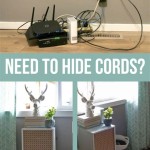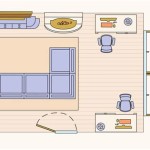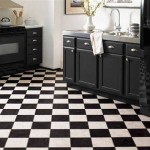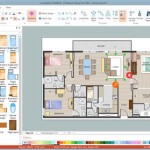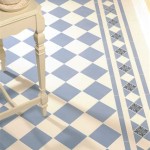Ways to Hide Cables on the Floor
Cables snaking across the floor present a common challenge in both residential and commercial spaces. These cables pose aesthetic issues, creating a cluttered and visually unappealing environment. Perhaps more critically, exposed cables constitute a significant safety hazard, increasing the risk of tripping and potential injuries. Effective cable management is therefore crucial, prioritizing both safety and visual appeal. This article explores various methods and products available for concealing cables on the floor, addressing both temporary and permanent solutions.
Before implementing any cable management strategy, it is essential to assess the specific environment and requirements. Consider the cable volume, the floor type, the frequency of foot traffic, and the desired aesthetic. A careful evaluation will inform the selection of the most appropriate and effective cable concealment solution.
Cable Channels and Raceway Systems
Cable channels, also known as raceways or cord covers, represent a widely used and effective method for concealing cables on the floor. These systems typically consist of a hollow channel made of durable materials such as PVC, metal, or rubber. Cables are placed inside the channel, and the channel is then affixed to the floor surface. This method provides a neat and organized appearance while protecting the cables from damage and minimizing trip hazards.
Cable channels are available in a variety of sizes, shapes, and colors to accommodate different cable volumes and aesthetic preferences. Some models feature adhesive backing for easy installation, while others require screws or other fasteners for secure mounting. Certain channels are designed with hinged lids or removable covers, allowing for easy access to the cables for maintenance or modification.
The selection of a cable channel should consider the specific application. For areas with heavy foot traffic, a low-profile channel with a non-slip surface is recommended. If the channel needs to blend seamlessly with the surrounding décor, select a color that matches the floor or baseboards. For higher cable volumes, opt for larger channels or consider using multiple parallel channels. Furthermore, ensure the channel is manufactured from a durable and fire-resistant material, complying with relevant safety standards.
Installation of cable channels typically involves cleaning the floor surface, measuring and cutting the channel to the desired length, placing the cables inside the channel, and securing the channel to the floor. For adhesive-backed channels, ensure the surface is clean and dry before applying the adhesive. For screw-mounted channels, drill pilot holes to prevent splitting the material and ensure a secure attachment. Proper installation is crucial for the channel's effectiveness and longevity.
Floor Cord Covers and Ramps
Floor cord covers offer another practical solution for concealing cables on the floor, particularly in temporary or high-traffic areas. These covers are typically made of flexible materials like rubber or PVC and feature a channel or ramp design that allows cables to be placed inside and safely crossed over. Cord covers are often employed in offices, trade shows, and construction sites to protect cables and prevent tripping hazards.
Unlike cable channels, cord covers are generally not permanently affixed to the floor, making them ideal for situations where cables need to be moved or reconfigured frequently. Their flexible nature allows them to conform to uneven surfaces and withstand repeated foot traffic. Many cord covers feature a textured surface to enhance grip and reduce the risk of slipping.
The selection of a floor cord cover should consider the cable volume, the anticipated foot traffic, and the floor surface. For heavy-duty applications, choose a cord cover made of durable rubber with a high load-bearing capacity. For lighter applications, a PVC cord cover may suffice. Ensure the cord cover is wide enough and deep enough to accommodate all the cables without compressing them. It is also advisable to choose a cord cover with a bright color or reflective markings to enhance visibility and further reduce the risk of tripping.
Installation of floor cord covers is straightforward. Simply place the cables inside the channel and position the cover over the cables. For added security, some cord covers feature interlocking edges that allow multiple covers to be connected together, creating a longer, more stable cable pathway. Regularly inspect the cord covers for wear and tear and replace them as needed to maintain their effectiveness.
Carpet Tiles and Under-Carpet Cable Management Systems
In carpeted areas, specialized cable management systems designed to be installed underneath the carpet provide a discreet and aesthetically pleasing solution. These systems typically consist of flat, flexible cables and connectors that can be run beneath the carpet tiles, along with access points or grommets that allow cables to be brought up to the surface where needed.
Under-carpet cable management systems offer several advantages. They completely conceal the cables, eliminating tripping hazards and creating a clean, uncluttered appearance. They also allow for flexible cable routing and reconfiguration, as the cables can be easily moved or added without disrupting the carpet or requiring extensive rewiring. These systems are particularly well-suited for open-plan offices, conference rooms, and other areas where frequent changes to the cable layout are anticipated.
The selection of an under-carpet cable management system should consider the type of carpet, the cable volume, and the required flexibility. Ensure the system is compatible with the carpet tiles and that the cables are thin and flexible enough to lie flat without creating bumps or ridges. It is also important to select a system that meets relevant safety standards and is designed to prevent damage to the carpet or cables.
Installation of under-carpet cable management systems typically requires professional installation to ensure proper placement and connectivity. The carpet tiles are lifted, the cables are laid out according to the desired configuration, and the carpet tiles are then replaced. Access points or grommets are installed to provide access to the cables from above. A thorough inspection should be conducted after installation to ensure proper functionality and safety.
Conduit and In-Floor Wiring
For more permanent and extensive cable concealment, particularly in new construction or renovation projects, consider using conduit or in-floor wiring. Conduit involves running cables inside protective pipes or tubes that are embedded in the floor, while in-floor wiring involves running cables directly within the floor slab or structure. These methods provide the most robust and aesthetically pleasing solution, as the cables are completely hidden from view.
Conduit and in-floor wiring offer significant advantages. They eliminate tripping hazards, protect cables from damage, and provide a clean, uncluttered appearance. They also allow for flexible cable routing and future expansion, as additional cables can be easily added to the conduit or wiring system. These methods are particularly well-suited for commercial buildings, data centers, and other environments where reliable and scalable cable infrastructure is essential.
The design and installation of conduit and in-floor wiring systems require careful planning and execution to ensure compliance with building codes and safety standards. The type of conduit or wiring should be selected based on the specific application and the anticipated cable load. The layout of the system should be carefully planned to minimize cable runs and ensure easy access for maintenance and future expansion. Electrical permits and inspections are typically required.
Installation of conduit and in-floor wiring typically involves a licensed electrician or contractor. The conduit or wiring is installed before the floor slab is poured or the flooring is installed. Access points or junction boxes are installed to provide access to the cables from above. A thorough testing and inspection should be conducted after installation to ensure proper functionality and safety. Utilizing conduit or in-floor wiring is generally the most effective way to hide cables on the floor, particularly when dealing with large quantities of cables.
Creative Concealment Techniques
Beyond dedicated cable management products, several creative techniques can be employed to conceal floor cables, often blending seamlessly with existing décor. These methods are often cost-effective and can add a unique touch to the space.
One approach involves strategically placing furniture to obscure cables. Positioning a rug over cables crossing an open area can effectively hide them while also enhancing the room's aesthetic. Similarly, running cables along the perimeter of a room and concealing them behind baseboards or furniture can minimize their visibility. Ensure that furniture placement does not put undue stress on the cables and that they remain easily accessible for maintenance.
Another technique involves using decorative elements to camouflage the cables. Wrapping cables with fabric or ribbon that matches the surrounding décor can make them less noticeable. Alternatively, consider using paintable cord covers to blend the cables seamlessly with the wall or floor color. Creative use of plants or other decorative objects can also help to obscure cables and add visual interest to the space.
Furthermore, consider utilizing existing architectural features to conceal cables. If possible, run cables through hollow baseboards or moldings. Alternatively, consider installing a false floor or raised platform to create a hidden space for cables. These methods require more extensive modifications but can provide a completely concealed cable pathway.
When employing creative concealment techniques, prioritize safety and accessibility. Ensure that cables are not pinched or stressed and that they remain easily accessible for maintenance and repairs. Avoid using flammable materials to conceal cables and ensure that the area remains well-ventilated. Regularly inspect the concealed cables for wear and tear and address any issues promptly.
The Importance of Proper Cable Management
Regardless of the chosen method, proper cable management is crucial for safety, functionality, and aesthetics. Poorly managed cables not only create a cluttered and visually unappealing environment but also pose significant safety hazards, increasing the risk of tripping, electrical shock, and fire.
Effective cable management involves not only concealing the cables but also organizing them properly. Use cable ties, Velcro straps, or other organizing tools to bundle cables together and prevent them from becoming tangled or knotted. Label cables clearly to facilitate identification and troubleshooting. Ensure that cables are properly supported and protected from damage. Regularly inspect cables for wear and tear and replace them as needed.
Prioritize safety by using only certified and approved cables and accessories. Avoid overloading electrical circuits and ensure that all cables are properly grounded. Keep cables away from heat sources and flammable materials. Install surge protectors to protect electronic equipment from power surges. Follow all applicable building codes and safety regulations.
By implementing a comprehensive cable management strategy, it is possible to create a safe, functional, and aesthetically pleasing environment. Choose the methods and products that best suit the specific needs and requirements of the space, and prioritize safety and organization at all times. Regular maintenance and inspection are essential to ensure the continued effectiveness and safety of the cable management system.

1 Simple Trick For Hiding Ugly Cords And Wires

How To Hide Wires The Home

Genius Ways To Hide Wires And Cords Youtube

How To Hide Cords And Wires 8 Simple Fixes

How To Hide Pesky Lamp Cords Hi Sugarplum

15 Best Tips For How To Hide Cords In Your Home Tv Wires And

How To Hide Cords And Cables In Your Home More Space Place

How To Hide Bedside Cords

How To Hide Pesky Lamp Cords Hi Sugarplum

11 Clever Ways To Hide Electrical Wires For A Good Looking Ceiling


